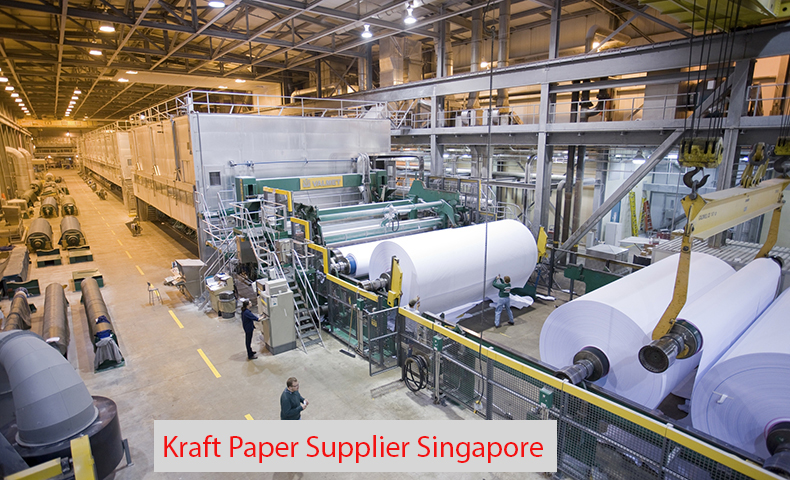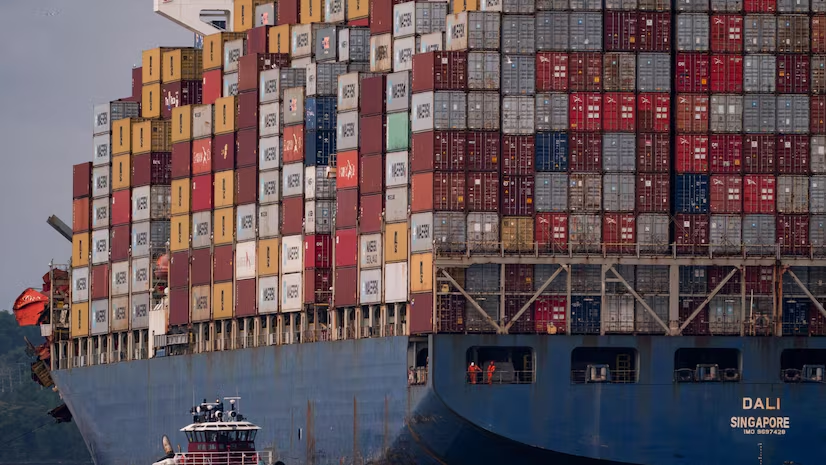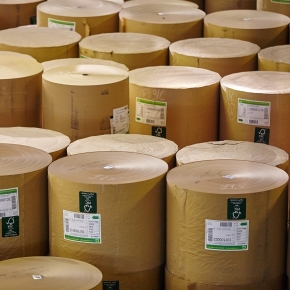Singapore Paper Industry is a vital part of the regional economy, excelling in recycling, packaging, and printing. Despite limited natural resources, its strategic location and focus on innovation make it a hub for trade and sustainable practices.

Singapore Paper Industry , Singapore Paper Market .
Singapore, a global trading hub, has a relatively small but strategically significant paper industry. While the country does not have vast natural resources like timber, its paper industry thrives on trade, value addition, and recycling. Singapore’s advanced infrastructure, excellent connectivity and business-friendly environment have made it a paper trading and processing hub, with several multinational companies setting up their regional headquarters in the city-state. Singapore Paper Market . The industry spans multiple sectors such as packaging, printing and textiles, capitalizing on Singapore’s focus on innovation and sustainability.
Key Players and Market Dynamics
Singapore’s paper industry is comprised of local and international companies. Key players include multinationals such as Asia Pulp & Paper (APP) and Oji Paper, which operate through partnerships and distribution networks in Singapore. These companies cater to domestic demand while serving as regional hubs for Southeast Asia. Small and medium-sized enterprises (SMEs) in the printing and packaging sector address niche markets by offering customized solutions. Singapore’s free trade agreement (ALF) and its logistics centers are promoting raw materials and exports of finished paper products, providing competitive prices and effective supply chains.
Focus on Sustainability and Recycling
Environmental sustainability is a cornerstone of Singapore’s paper industry, and the Government encourages recycling through policies and public awareness campaigns, resulting in high paper recycling rates. Some Singapore processes have collected paper into new products, reducing dependence on imports and reduced carbon traces. Singapore Paper Market .The company in this sector is invested in green technology, including production processes to save water and energy -saving equipment to comply with global stability standards. In addition, certifications such as FSC (Forest Stewardship Council), which guarantee that paper products meet the requirements of responsible sourcing, are increasingly in demand.
Challenges Faced by the Industry
Despite its strengths, Singapore’s paper industry faces many challenges. High labor costs and a lack of industrial land limit large-scale manufacturing operations. Singapore’s dependence on imported raw materials, such as pulp and paper rolls, exposes the industry to fluctuations in global commodity prices and supply chain disruptions. Moreover, increasing digitalization has reduced demand for traditional printing paper, compelling companies to diversify into packaging and specialty papers to sustain growth. Competition from neighboring countries with lower production costs adds further pressure on the market. Singapore Paper Industry .
Emerging Trends and Innovations
The industry is adapting to changing market trends by adopting technology and innovation. Digital printing and smart packaging solutions are becoming more prevalent, enabling companies to serve personalized, high-value markets. Singapore Paper Market .With the growth of electronic commercial transactions, the demand for waveform packaging increased, which led to automation and investment in production efficiency. Singapore Paper Industry . In addition, R & D focuses on biodegradable materials and advanced recycling methods, solving environmental issues, and consumer satisfaction of environmentally friendly products.
Future Prospects and Opportunities
The Singapore paper industry is poised for steady growth, driven by regional demand and a focus on sustainability. The government’s initiatives to foster innovation and green manufacturing provide a conducive environment for expansion. Singapore Paper Industry .Opportunities abound in the packaging sector, particularly for lightweight, eco-friendly materials, as companies seek sustainable alternatives. As Singapore strengthens its position as a trade and logistics hub, the paper industry can leverage these advantages to expand its global presence. Collaboration with research institutes and cross-border partnerships will help the industry remain competitive in a rapidly changing environment. Singapore Paper Industry .
Although Singapore’s paper industry is not as large as that of timber-rich countries, it plays a vital role in Southeast Asia’s trade and manufacturing ecosystem. The country’s strategic geographic location, developed infrastructure and business-friendly policies have made it an important hub for paper trading, recycling and specialized processing. The industry’s evolution reflects Singapore’s broader commitment to sustainable development, technological innovation and economic diversification. This review takes an in-depth look at the industry’s scope, its players, challenges and future potential.
Singapore’s paper industry can be divided into several segments such as packaging, printing, converting and textiles. Packaging is the largest segment, driven by the growth of e-commerce and increasing demand for sustainable materials. The printing sector follows closely, and despite digitalization continues to target niche markets such as high quality print publications and corporate documents. Singapore has become a leader in the collection and reuse of waste paper, increasing the importance of the recycling sector. Fabric products also form important segments that meet both house consumption and export needs.

Singapore industry is characterized by both large multinational companies (MNC) and SME (SME). Companies such as Asia Pulp & Paper (APP) and Double A maintain a significant presence, leveraging their connections with Singapore to serve the regional market, while smaller businesses are focusing on personalized services such as personalized packaging and printing solutions. The symbiotic relationship between these organizations ensures that Singapore remains a versatile player in the global paper market. Singapore Paper Industry .
Sustainability is a cornerstone of Singapore’s industrial policy, and the paper sector is no exception. The government actively promotes the circular economy, encouraging businesses to reduce waste and increase recycling rates. Waste restoration is a prosperous sector supported by advanced means that transform the material extracted into high quality products. The reliable infrastructure of Singapore’s treatment reduces its dependence on imported raw materials, contributing to the global environmental objectives at the same time.
In addition to recycling, paper companies in Singapore adopt sustainable practices such as water-efficient production methods, energy conservation and the use of certified raw materials. Certifications such as the Forest Stewardship Council (FSC) and the Program me for the Endorsement of Forest Certification (PEFC) are highly regarded and reflect a commitment to responsible sourcing. Singapore Paper Industry .These measures are positioned as not only the demand of consumers in environmentally friendly products, but also Singapore companies as leaders in sustainable production fields.
Despite its strengths, the Singapore paper industry faces multiple challenges. High operational costs, including labor and land expenses, limit the scalability of manufacturing operations. The industry’s reliance on imported raw materials such as wood pulp and recycled paper exposes it to global price fluctuations and supply chain disruptions. Singapore Paper Market . Additionally, the increasing digitalization of communications and media has reduced demand for traditional printing papers. Singapore’s proximity to lower-cost countries like Indonesia and Malaysia also poses competitive challenges. These countries benefit from abundant natural resources and cheaper labor, making them attractive alternatives for large-scale production. To stay competitive, Singapore’s paper industry is focusing on higher value-added segments, leveraging innovation and logistics excellence to differentiate itself in the global market.
Technology plays a key role in adapting Singapore’s paper industry to market demands. Automation and digitalization of production processes are transforming efficiency and reducing costs. Embracing Industry 4.0 principles such as the Internet of Things, AI and data analytics will enable companies to optimise supply chains and better forecast demand.

Smart packaging is a key area of innovation. By integrating QR codes, RFID tags and other digital elements, companies improve the functionality and traceability of their packaging solutions. Another promising area is research into biodegradable and compostable materials as part of a global effort to reduce plastic waste. Singapore Paper Market .These innovations increase not only the value of the products, but also open up new income flows in the development markets.
The Singapore government actively supports the paper industry through policies that encourage innovation, sustainability and trade. Initiatives such as the Industry Transformation Maps (ITMs) outline strategies to improve productivity and promote green manufacturing. Singapore Paper Market . Financial incentives such as subsidies and tax breaks encourage companies to invest in research and development (R&D) and adopt environmentally friendly technologies.
Trade agreements play a key role in the success of the industry. The huge network of the Singapore Freedom Trade Agreement (ALE) with countries around the world offers advantageous prices and access to the paper product market. In addition, the strategic status of an urban state as a global logistics center promotes an inseparable business in imports and exports, and strengthens its role in international supply chains.
The rapid growth of e-commerce in Southeast Asia presents huge opportunities for Singapore’s paper industry, with online retail and last-mile delivery services driving a surge in demand for corrugated boxes and other packaging materials. Companies are capitalizing on this trend by expanding their packaging portfolios and investing in high-performance production lines. Singapore Paper Industry .
Another area of potential is specialty papers, such as thermal paper used in POS systems and medical paper for healthcare applications. These niche markets offer high margins and strong demand, making them attractive segments for Singaporean manufacturers.
The Singapore paper industry is ready for sustainable growth supported by innovation and local demand. In order to maintain competitive advantage, the industry must invest in advanced technology and sustainable practices. Partnerships with research institutes and collaboration with regional stakeholders will be essential to drive innovation and expand market reach. Singapore Paper Industry .
The transition to a low-carbon economy presents both challenges and opportunities. Companies that proactively adopt green technologies and adhere to global sustainability standards will be well positioned to thrive in an ever-changing landscape. By leveraging strategic advantages and focusing on high value-added sectors, Singapore’s paper industry can continue to play a key role in regional and global markets.
The Strategic Role of Singapore’s Paper Industry
The Singapore paper industry plays an important role in Southeast Asian economic and environmental landscapes. Despite the lack of domestic natural resources, the status of a global shopping center has succeeded in trade, treatment and treatment of paper. The industry’s segments include packaging, printing, and tissue products, each contributing significantly to local and regional markets.
Sustainability is a key focus for the sector. Advanced processing objects in Singapore turn waste paper waste into reusable materials corresponding to global environmental goals. Singapore Paper Market . Many companies accept green -made methods, ensuring the efficient use of resources and reducing their carbon trace. Certifications like FSC and PEFC demonstrate industry’s commitment to responsible supply and sustainable production.
Challenges remain, such as high operational costs and reliance on imported raw materials, but innovation is creating solutions. The rise of e-commerce is driving demand for sustainable packaging materials, while advances in smart packaging and biodegradable products are creating new opportunities. Government support in the form of fiscal incentives and trade agreements will further strengthen the sustainability of the industry. Singapore has been prioritized for green technology and regional integration, so the paper industry is ready to grow. Accepting innovation and stability is still the competitiveness in the rapidly developing world market.
Industries are adopting advanced technologies and green manufacturing to meet the growing demand for environmentally friendly products. Packaging, driven by the growth of e-commerce, constitutes a significant segment alongside specialized printing solutions. Government support through trade agreements and incentives strengthens its global competitiveness. By emphasizing resilience and adapting to market trends, Singapore’s paper sector remains a resilient and growing player in Southeast Asia. Singapore Paper Market .



